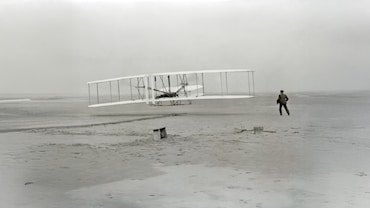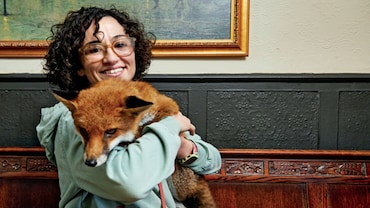- HOME
- /
- Features
- /
- Cover Story
- /
Girl, Uninterrupted
A powerful exploration of identity, freedom, and the quiet feminist act of a woman at leisure
 Surabhi Yadav
Surabhi Yadav
The recent MahaKumbh celebrations reminded me of my only memory of attending a Kumbh Mela in 2004 as a teen. I don’t remember the crowd, the prayers, the ascetic and eccentric sadhus, or any other part of this great orchestration of devotion and commerce.
I do, however, remember being cold, standing on the stone steps of a river, shivering just like everyone else around at 5 a.m. Women and men around me took cautious steps to first dip their toes in the water, followed by their torso, joining hands in desperate prayers and then rushing out of the shallow side of the river to their clothes. A quick dip. A dutiful exit.
And then—my mother.

My mother, tall and broad, her saree draped in seedha palla, cutting through the obedient crowd like a blade. Not a cautious dipper but a diver. A woman who plunged headfirst into the river. The river opened for her. She cut through the dark water, long strokes, smooth, assured, gliding from one end to another.
The crowd was stunned in silence with the spectacle of a woman swimming, alone, in the deep. I remember standing in that crowd seething in what felt like anger and betrayal. After all, this was the same woman who spent years warning me against water. She didn’t let me learn swimming as a kid because she was scared I would drown. And here she was swimming as if she always belonged in water. As if she has done this before and never stopped.
Swimming to her heart’s content was her way of praying. Unable to hide my displeasure, I inquired as soon as she stepped out of the water, “How do you know how to swim?”
She shrugged. “My village was close to the river Betwa. So for years, all the kids in the family spent hours swimming in it as often as possible”.
My jaw dropped in disbelief. A lifetime ago, in another river, in another life, my mother had been something else. Someone else. She was a lot more than I thought her to be.

A decade later, I lost my mother to an illness. For the 23 years, while she was in my life, this was the only time she swam. I wonder if she ever wanted to swim again. If yes, why didn’t she? If not, then did she ever miss it?
This became one of the handful of memories I have when she was absolutely carefree, bindaas, boundless. Basically, one of the few times when she was not-my-mother. She was just herself.
Days after her death, I remember wondering often: Who was she as a person? What was her politics? Her worldview? If she would write poetry or stories, what would she write about? Who was my mother when she was not being my mother? I never took interest in knowing any of that. Guilt over not knowing my mother enough overshadowed the grief of losing her too soon.

I desperately started interviewing people in her life to collect more data and build a fuller image of her, alas, in retrospect. In response to my opening question “What do you remember about Ma?”, one of our neighbours, Gangaly aunty, said “Your mother was the funniest, goofiest person in our neighbourhood women’s group”. Funny and goofy? Not the adjectives I think of to describe my mother. My mother was a taskmaster, a disciplinarian, someone who had more frown lines on her face than laugh lines. When and where was my mother being this funny and goofy self? I really didn’t have an answer to that.
To me, she was what she did. Her work decided her worth for me. And because patriarchy and capitalism do not assess housework, care work and the visible-but-taken-for-granted labour of making our everyday lives livable as work of high worth, I did not think my mother was worthy of my attention and curiosity.

I didn’t value her labour and thus, I didn’t value her leisure (or the lack of it). This inquiry turned my gaze to my older sister’s everyday life—another woman who lives the life of relentless work every day. I started photographing her leisure—a window of time and space when her guards were down to whatever extent possible. I watched for the moments in between—the stolen seconds when the weight of the world slipped from her shoulders.
When she was not performing—just being.
Over seven years, what started as an investigation about my mother became an archive: a rich repository of visuals called Project Basanti: Women at Leisure. This project welcomed me into the inner lives of women around the country—a loud, vibrant, colourful, at times quiet and intriguing scene.
Farmers playing with mud while sowing seeds; aunties taking all-women’s trips to religious sites after retirement; older women at weddings spewing crass songs that rail against marriage, in-laws and extol extra-marital affairs; women competitively playing games in someone’s living room during their monthly kitty gatherings; nuns staring at the evening sky on a beach for hours; teachers dabbling with a basketball after the school empties, lovers stealing a kiss under a moonlit sky, girls enjoying a nap in the winter sun, mothers obsessively journalling her grief and thoughts about the life and death of her child, or just sipping a cup of chai by herself on the balcony in the first hour of the morning, before the grind begins.

This project may have started as a way to know my mother better, but has since also become a way of exploring the depths of my feminism. While so many people think of the act of women’s leisure as an act of resistance, I’ve come to think of leisure as an act of creation—creation not in the capitalist sense of ‘being productive’, but the creation of a self through the simple act of being, and allowing one’s self to flourish without any external instructions on who to be, or how to be.
Somewhere on this journey, the toolkit of my feminism expanded. I no longer solely depend on the politics of resistance as my go-to instrument but lean lovingly on the politics of creation more and more.
I have become acutely aware that the benchmarks of feminist success are determined by reacting to the poking of the patriarchy. We measure our success by how much we refuse. This idea of feminist progress has gnawed at me as it seems to be a very limiting way to build a feminist future or present. If we are always going to be caught up in resisting, when would we have the energy to create?
I am becoming more and more curious about what we might have created if we were not in battle-mode. What would our benchmark of success be then? If I remove resistance as a goal, what purpose am I left with in my feminist journey?

To me, leisure is that answer. These moments are a rehearsal for a world in which we are not merely reacting to the jabs, jibes and injustices of power, but existing, or rather evolving, beyond its reach.
Who would my mother have become, if she were never interrupted by patriarchy? And so search continues—for women in the deep end; women who, just for a moment, are not mothers, not daughters, not wives. Just themselves.
The ones, who against all odds, simply swim. Uninterrupted.
An alumna of the University of California Berkeley and IIT Delhi, Surabhi Yadav is the Founder of two gender equality & rural development initiatives in India— Sajhe Sapne and Project Basanti: Women at Leisure. Visit @women_at_leisure on Instagram and sajhesapne.org to learn more.






